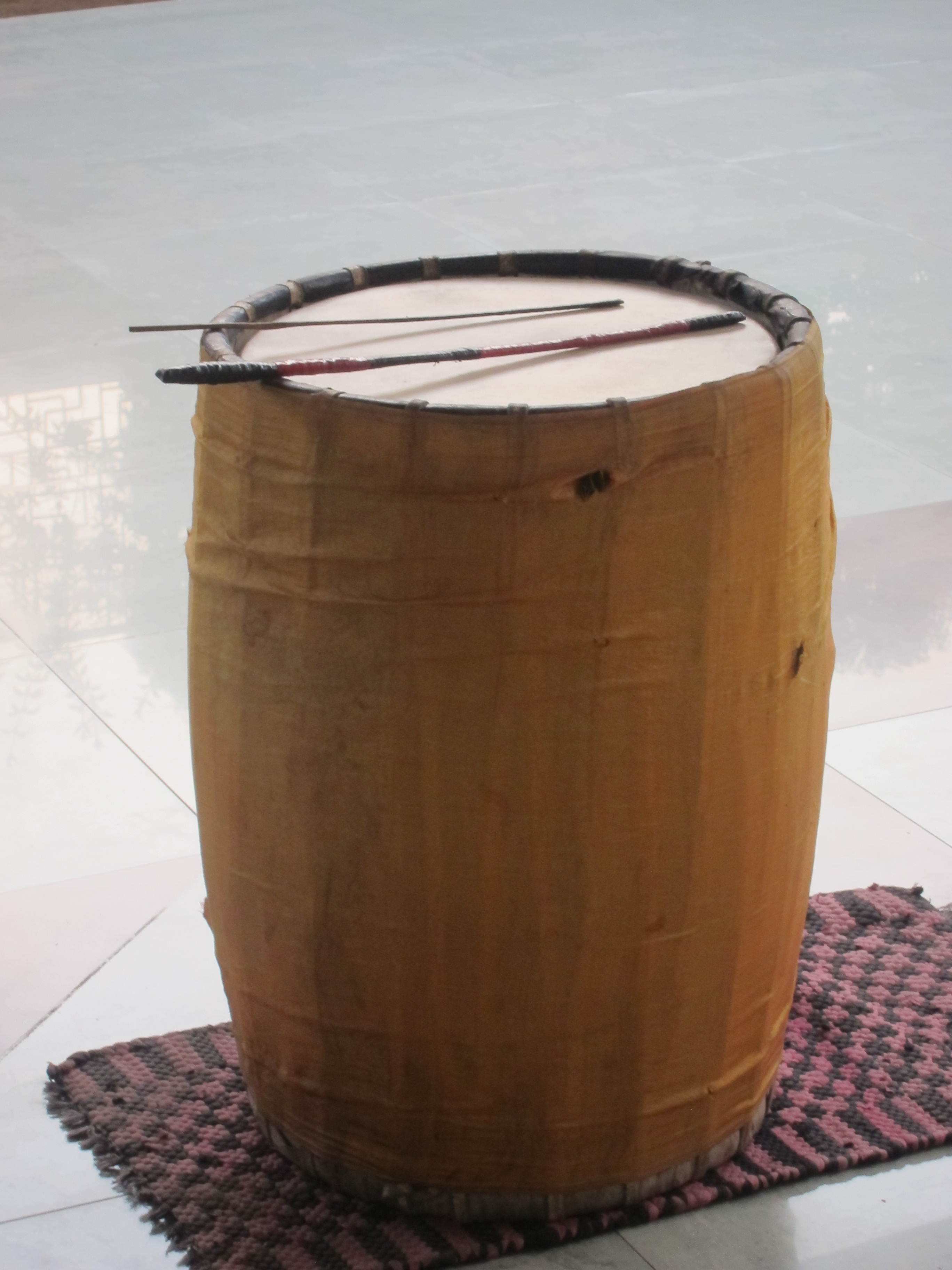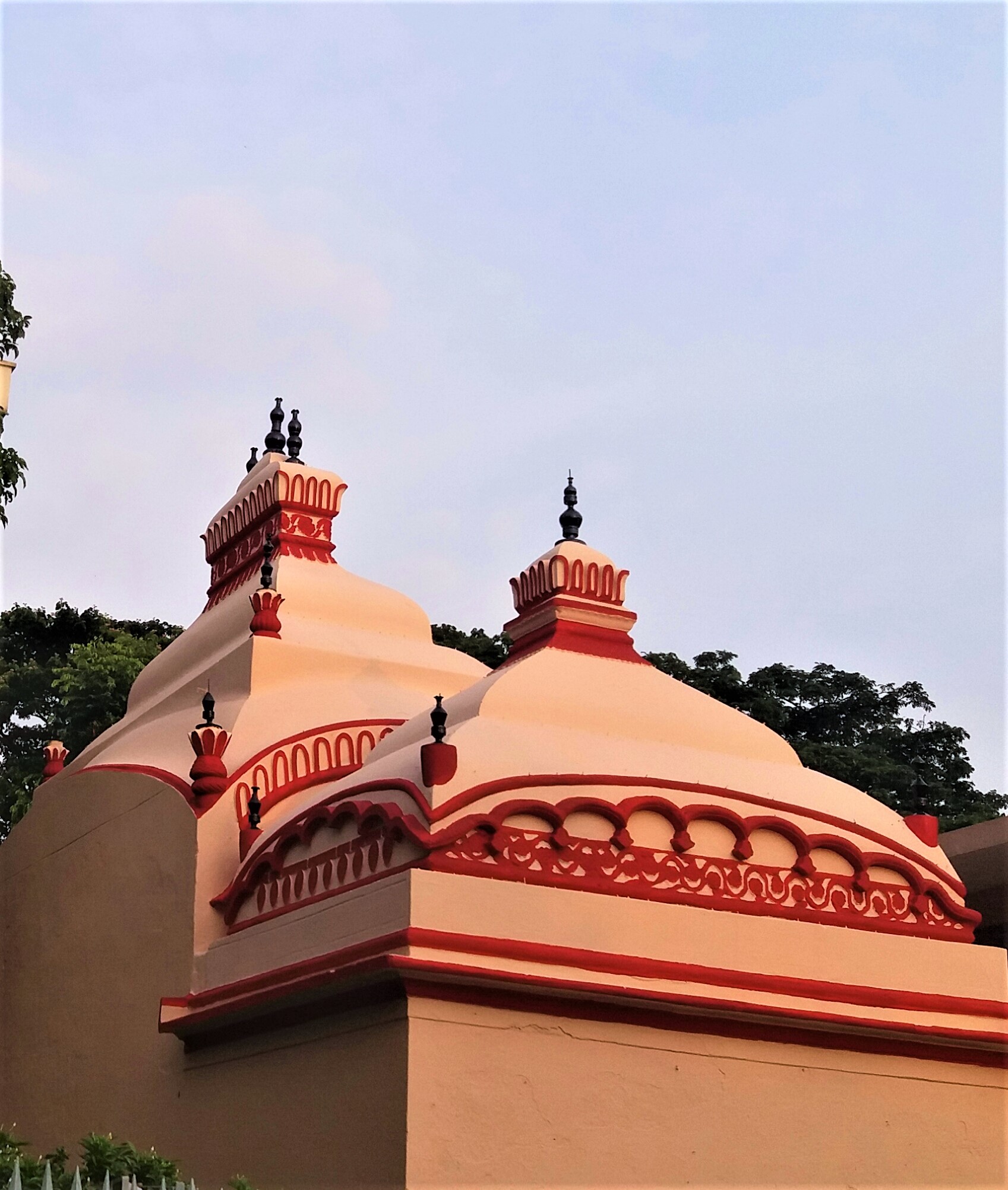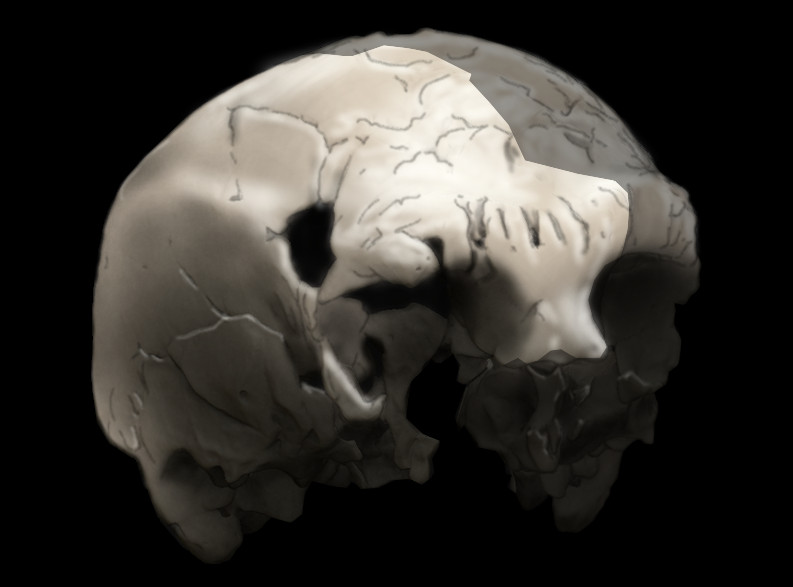|
History Of Dhaka
Dhaka (Dacca) is a modern megacity with origins dating from 500 BC to 200 BC. The history of Dhaka region begins with the existence of urbanised settlements that were ruled by Gupta Empire, Gauda Kingdom, Pala Empire and Chandra dynasty before passing to the control of the Sena dynasty in the 10th century CE. After the reign of Sena dynasty, the region was ruled by the Hindu Deva dynasty of Bikrampur. Dhaka was successively ruled by the Turkic and Afghan governors descending from the Delhi Sultanate, followed by the Bengal Sultanate, before the arrival of the Mughals in 1608. The city became proto-industrialised and declared capital of the Mughal Bengal and commercial (financial) capital of the Mughal India. The Dhaka natural riverine port has a recorded existence since the 16th century CE. Dhaka's strategic riverine location in Bengal made it a hub for Eurasian traders, including Armenians, the Portuguese, French, Dutch and British. The bustling old city was known as the V ... [...More Info...] [...Related Items...] OR: [Wikipedia] [Google] [Baidu] |
Mughal India
The Mughal Empire was an early modern empire in South Asia. At its peak, the empire stretched from the outer fringes of the Indus River Basin in the west, northern Afghanistan in the northwest, and Kashmir in the north, to the highlands of present-day Assam and Bangladesh in the east, and the uplands of the Deccan Plateau in South India.. Quote: "The realm so defined and governed was a vast territory of some , ranging from the frontier with Central Asia in northern Afghanistan to the northern uplands of the Deccan plateau, and from the Indus basin on the west to the Assamese highlands in the east." The Mughal Empire is conventionally said to have been founded in 1526 by Babur, a chieftain from what is today Uzbekistan, who employed aid from the neighboring Safavid and Ottoman Empires Quote: "Babur then adroitly gave the Ottomans his promise not to attack them in return for their military aid, which he received in the form of the newest of battlefield inventions, the matchlock ... [...More Info...] [...Related Items...] OR: [Wikipedia] [Google] [Baidu] |
Davaka Kingdom
Davaka (Skt. *Ḍavāka) was a kingdom of ancient Indian subcontinent, located in current central region of Assam state. The references to it comes from the 4th century Allahabad pillar inscription of Samudragupta, where it is mentioned as one of five frontier kingdoms of the Gupta Empire. Other references are the Shung-Shu History of the Liu Song dynasty, where the kingdom is named ''Kapili'' (now the name of a river); the Gachtal stone pillar inscription written in Kamrupi Prakrit. N. K. Bhattasali has identified it with Dabaka in modern Hojai district, with the kingdom associated with the Kopili- Kolong river valley. Historians such as B. N. Puri (1968) and P. C. Choudhury (1959) claim that it was absorbed much earlier in the first half of the 5th century during the reign of Kalyana Varman (422–446). Its capital was located near Kopili river. In the year 428 AD, an ambassador was sent to China by Davaka king, whose name according to Chinese sources is Yuegnai or Y ... [...More Info...] [...Related Items...] OR: [Wikipedia] [Google] [Baidu] |
Harisena
Harisena was a 4th-century Sanskrit poet, panegyrist and a court official. He was an important figure in the court of Gupta emperor, Samudragupta. His most famous poem, written , describes the bravery of Samudragupta and is inscribed on the Allahabad Pillar. At least one of his known inscriptions was written as a panegyric. Harisena was an early writer of Kāvya poetry; Arthur Berriedale Keith says of it, "Harisena's poem bears expressly the title Kavya, though it consists both of prose and verse. Its structure is similar to the delineation of kings adopted in the prose romances of Subandhu and Bana". Other works attributed to either this author (or others by the same name) includes ''Apabramsa Dharmapariksa'', ''Karpuraprakara'' (''Suktavall''), the medical treatise ''Jagatsundari-Yogamaladhikara'', ''Yasodharacanta'', ''Astahnikakatha'' and ''Brhatkathakosa''. He was also the chief minister of Samudragupta's empire. Harishena had a great interest in playing the lute with ... [...More Info...] [...Related Items...] OR: [Wikipedia] [Google] [Baidu] |
Butea Monosperma
''Butea monosperma'' is a species of '' Butea'' native to tropical and sub-tropical parts of South Asia and Southeast Asia. It is also known as flame of the forest, Bengal kino, dhak, palash, and bastard teak. Revered as sacred by Hindus, it is prized for producing an abundance of vivid blooms, and it is also cultivated elsewhere as an ornamental. The plant grows across Bangladesh, India, Nepal, Pakistan, Sri Lanka, Myanmar, Thailand, Laos, Cambodia, Vietnam, Malaysia, and western Indonesia. Description ''Butea monosperma'' is a small-sized dry-season deciduous tree, growing to tall. It is slow-growing: young trees have a growth rate of a few feet per year. The leaves are pinnate, with an petiole and three leaflets. Each leaflet is long. The flowers are long, bright orange-red, and produced in racemes up to long. The fruit is a pod long and broad.Huxley, A., ed. (1992). ''New RHS Dictionary of Gardening''. Macmillan . The flowers frequently have a spectacular bloom ... [...More Info...] [...Related Items...] OR: [Wikipedia] [Google] [Baidu] |
Durga Puja
Durga Puja (ISO 15919, ISO: , ), also known as Durgotsava or Shaaradotsava, is an annual festival originating in the Indian subcontinent which pays homage to the Hinduism, Hindu goddess Durga, and is also celebrated because of Durga's victory over Mahishasura. It is the biggest festival of Bengali Hindus and the Indian state of West Bengal. Durga Puja in Kolkata, Durga Puja as celebrated in Kolkata, West Bengal's capital city, was inscribed on the UNESCO Intangible Cultural Heritage Lists, intangible cultural heritage list of UNESCO in December 2021. In addition to West Bengal, Hindu Bengalis are native to Bangladesh and Indian state of Tripura, Barak Valley, Assam (Barak Valley), Jharkhand and Kosi-Seemanchal, Bihar (Kosi-Seemanchal); Therefore, Durga Puja is performed with great devotion in these places as well. The festival is observed in the Indian calendar in the month of Ashwin, Ashvin, which corresponds to September–October in the Gregorian calendar. Durga Puja is ... [...More Info...] [...Related Items...] OR: [Wikipedia] [Google] [Baidu] |
Dhak (instrument)
The dhak is a huge membranophone instrument from Bengal and Assam. The shapes differ from the almost cylindrical to the barrel. The manner of stretching the hide over the mouths and lacing also varies. It suspended from the neck, tied to the waist and kept on the lap or the ground, and usually played with wooden sticks. The left side is coated to give it a heavier sound. It is of medieval origin, and is used in Hindu religious festivals of the region, especially of Sakta and Shaiva traditions, including Durga Puja, Kali Puja and Charak Puja. The drum beats, mostly played by the Bengali Hindu community, along with the ''arati'' (invocation dance) forms an integral part of Durga Puja unique to Bengal. The Tea-garden community, tea-tribes of Assam play ''dhak'' along with ''Nagara (drum), nagara''. ''The Statesman (India), The Statesman'' wrote, "Durga Puja does not assume the festive aura without the maddening beats of the dhak, the large drum that people hang around their neck ... [...More Info...] [...Related Items...] OR: [Wikipedia] [Google] [Baidu] |
Raja Ballal Sena
Raja (; from , IAST ') is a noble or royal Sanskrit title historically used by some Indian rulers and monarchs and highest-ranking nobles. The title was historically used in the Indian subcontinent and Southeast Asia. The title has a long history in South Asia and Southeast Asia, being attested from the ''Rigveda'', where a ' is a ruler, see for example the ', the "Battle of Ten Kings". The title has equivalent cognates in other Indo-European languages, notably the Latin Rex and the Celtic Rix. Raja-ruled Indian states While most of the Indian salute states (those granted a gun salute by the British Crown) were ruled by a Maharaja (or variation; some promoted from an earlier Raja- or equivalent style), even exclusively from 13 guns up, a number had Rajas: ; Hereditary salutes of 11-guns : * the Raja of Ali Rajpur * the Raja of Bilaspur * the Raja of Chamba * the Raja of Faridkot * the Raja of Jhabua * the Raja of Mandi * the Raja of Manipur * the Raja of Nar ... [...More Info...] [...Related Items...] OR: [Wikipedia] [Google] [Baidu] |
Dhakeshwari
Dhakeshwari National Temple () is a Hindu temple in Old Dhaka, Bangladesh. It is state-owned, giving it the distinction of being Bangladesh's 'National Temple'. The name "Dhakeshwari" (ঢাকেশ্বরী ''Ðhakeshshori'') means "Goddess of Dhaka". Bangladesh is the only country (only Muslim majority country) in the world to have a National Hindu Temple. It's one of the holiest Shakta pithas where the gem of Devi sati's crown fell but the gem is lost long ago and the main ancient Vigraha or stone murti is relocated to Kumortuli West Bengal during the partition time by the chief priest due to increased attacks on Hindu temples in Bangladesh. Since the destruction of Ramna Kali Mandir in 1971 by the Pakistan Army during the Bangladesh Liberation War, the Dhakeshwari Temple has assumed status as the most important Hindu place of worship in Bangladesh. It is also the largest Hindu temple in Bangladesh. It is one of the Shakta pithas, the goddess-centric shrines of the In ... [...More Info...] [...Related Items...] OR: [Wikipedia] [Google] [Baidu] |
Sultanate Period
Sultan (; ', ) is a position with several historical meanings. Originally, it was an Arabic abstract noun meaning "strength", "authority", "rulership", derived from the verbal noun ', meaning "authority" or "power". Later, it came to be used as the title of certain rulers who claimed almost full sovereignty (i.e., not having dependence on any higher ruler) without claiming the overall caliphate, or to refer to a powerful governor of a province within the caliphate. The adjectival form of the word is "sultanic", and the state and territories ruled by a sultan, as well as his office, are referred to as a sultanate ( '. The term is distinct from king ( '), though both refer to a sovereign ruler. The use of "sultan" is restricted to Muslim countries, where the title carries religious significance, contrasting the more secular ''king'', which is used in both Muslim and non-Muslim countries. Brunei, Malaysia and Oman are the only sovereign states which retain the title "sultan" fo ... [...More Info...] [...Related Items...] OR: [Wikipedia] [Google] [Baidu] |
João De Barros
João de Barros (; 1496 – 20 October 1570), nicknamed the "Portuguese Livy", is one of the first great Portuguese historians, most famous for his (''Decades of Asia''), a history of the Portuguese in India, Asia, and southeast Africa. Early years João de Barros was born in Viseu, Portugal around 1496. He was the illegitimate son of Lopo de Barros, a squire in the royal household of Manuel I of Portugal and a holder of various judicial posts. Nothing is known of his mother. At a young age his father died and he was placed into service at the royal household, where he became a page to the heir apparent, Dom João, the future João III of Portugal. Educated in the palace, he composed, at the age of twenty, a romance of chivalry, the ''Chronicle of the Emperor Clarimundo'', in which he is said to have had the assistance of Prince John (later King John III). Upon ascending the throne, King John III awarded Barros the captaincy of the fortress of St George of Elmina, to which ... [...More Info...] [...Related Items...] OR: [Wikipedia] [Google] [Baidu] |
Portuguese People
The Portuguese people ( – masculine – or ''Portuguesas'') are a Romance languages, Romance-speaking ethnic group and nation Ethnic groups in Europe, indigenous to Portugal, a country that occupies the west side of the Iberian Peninsula in Southern Europe, south-west Europe, who share Culture of Portugal, culture, ancestry and Portuguese language, language. The Portuguese state began with the founding of the County of Portugal in 868. Following the Battle of São Mamede (1128), Portugal gained international recognition as a Kingdom of Portugal, kingdom through the Treaty of Zamora and the papal bull Manifestis Probatum. This Portuguese state paved the way for the Portuguese people to unite as a nation. The Portuguese Portuguese maritime exploration, explored Hic sunt Dracones, distant lands previously unknown to Europeans—in the Americas, Africa, Asia and Oceania (southwest Pacific Ocean). In 1415, with the conquest of Ceuta, the Portuguese took a significant role in the ... [...More Info...] [...Related Items...] OR: [Wikipedia] [Google] [Baidu] |








